In This Issue: From The Skittles Room The 2025 Chess Calendar By IM Silas Esben Lund Annotated Games from the Marshall FIDE U2400, by GM Aleksandr Lenderman Annotated Games from the Rapid and Blitz Championship, by IM Mykola Bortnyk Warriors at the Board, by Vladimir Lionter Chess Toons En Passant Problems, Problems, curated by Alexander George Editor's Note
Welcome back, fellow chess players, to this edition of the Marshall Chess Club's fortnightly bulletin, The Marshall Spectator.
Dear Club Members and Parents,
Effective immediately, the only areas designated for eating are the Skittles room located on the second floor behind the main playing hall, the kitchen in the lobby, and the backyard when the weather permits.
There is no food and eating permitted in the three playing halls. The two downstairs and the main hall upstairs. The front room playing hall downstairs will only be open for tournaments, classes, and camps. This is necessary to maintain a clean and safe space for the players participating in our tournaments. Furthermore, I am asking that you please monitor the behavior of your children in between rounds to avoid any damage done to the club's chess sets, tables, chairs, and walls.
We appreciate your cooperation and responsibility in maintaining the club clean, presentable, and welcoming to all our members and visitors.
Regards, Carlos Chavez
Looking ahead, please save the dates for our other upcoming club championships: November 15-17, the Mona Karff Memorial/Marshall Women’s Championship will run concurrently with the Marshall Chess Club Senior Championship. The following weekend, November 22 - 24, will be the Jerry Simon Memorial and Marshall Amateur Championship, which is also a qualifier for our club championship happening in December. The 108th annual Edward Lasker Memorial and Marshall Chess Club Championship will take place December 12-15, culminating with the crowning of the 2024 club champion.
We are proud to announce that we now text pairings to players! To get your pairings texted to you before the round, please sign up here:
https://www.marshallchessclub.org/pairingstext
If you are a parent and spend a lot of time in a nearby coffee shop waiting for your child to finish their round and would like to be notified when they enter a result on our pairings screens, sign up here and you will be texted the moment they enter a result!
https://www.marshallchessclub.org/resultstext
We are thrilled to launch a new series of Chess Workshops for Kids at our historic club. Registration dates for all camps this year are up. Our camps will be open to all scholastic members and we will cap each camp date at 40 kids. The entry fee is $130 per camp session, and will be led by GM Djurabek Khamrakulov. We look forward to inviting special guests for simuls and lectures. Here is the schedule for the rest of the year:
November 1, 2024- Special simul, speed chess, and more with GM Andrew "penguingm" Tang!
November 5, 2024
November 11, 2024
December 26, 2024
December 27, 2024
December 30, 2024
December 31, 2024
The club will provide lunch (chipotle/ pizza) and snacks throughout the day, as well as park play if the weather permits. We will also have a camp “piggy bank” in which a portion of registration fees will go into for each camp day. Campers who participate in at least 4 camp days this year will be eligible for a free super tournament next year with prizes (up to $2000 in value!) in the form of private lessons, trophies, merchandise, and much more.
It’s the last few days to take advantage of the club’s partnership with ChessMood, an online chess training platform that helps players improve their game with courses, training, and other resources. Using the link below, members will receive a ChessMood membership free for one month if they claim it between October 1st and November 1st! Renewing members will also receive one month free. People who sign up for a ChessMood membership will receive a discount and help support the club.
Get your one month free here: https://chessmood.com/gifts/marshall
View some ChessMood Success Stories here: https://chessmood.com/success-stories
The 2025 Chess Calendar By IM Silas Esben Lund is out!
The 2025 Chess Calendar has 365 daily puzzles throughout the year, all selected and presented by me for SILU Games, the company co-founded in 2018 with my wife Lu Mu. The Chess Calendar has been in production since 2020, and since 2022 it contains positions from Chess Olympiads. Besides the Chess Calendar, SILU Games also sells chess books, educational games, and chess accessories.
January 1, 2025!
The 2025 Chess Calendar begins on January 1st, 2025, and has 365 daily puzzles throughout the year. This year’s edition contains positions from the 1952 and 1954 Olympiads in Helsinki and Amsterdam. The puzzles are graded on 5 levels throughout the week whereas Fridays are reserved for endgames. The approximate rating level is from 700-1600, perhaps higher on weekends where focus is on strategic concepts as well as tactics.
Try 7 puzzles from the 2023 Chess Calendar
Click on the link below to go to 7 puzzles from the 2023 Chess Calendar, one week from Monday to Sunday. This gives a sense of how the Calendar works. The solutions are given on the blog page as well:
https://silasesbenlund.com/7-exercises-from-the-2023-chess-calendar-3/
Here is a direct link to the 2025 Chess Calendar on Etsy:
https://www.etsy.com/listing/1762072206/2025-chess-calendar-with-daily-puzzles
Use the promo code MARSHALL10 to get 10% off! The discount goes for all products in our Etsy store. Scan the QR-code to go directly to our Etsy Shop:
Over the last two weeks we have had a plethora of events for our members to play in.
The Rated Beginner Open on October 27 had 46 players registered and concluded with Jack Troast, Nathan Eppel, and Darius Friedman coming out on top with a perfect 3 out of 3 score to win $191.67 each.
The Saturday Game 50 Open on October 26 had 41 players registered and was won by IM Justin Sarkar, who scored a perfect 4 out of 4 to win $246. GM Michael Rohde and Jeremy Yoon scored 3.5 out of 4 to win $61.50 each, while Fiona Tushman and Kyle Cheng won $41 each for their 2.5 out of 4 score. The following seven players shared in a class prize, winning $11.71 each for their 2.5 out of 4 score: Robert Beatty, Kenji Goto, Dhruthi Rao, Hudson Wong, Axel Peters, John Silva, and Tolani Somefun.
The Under 2000 Morning Action on October 25 had 41 players registered and a long list of winners. Davin Chen, Carlo He, Kenny Bollin, Armaan C Jain, and Gabriel Bussa scored a perfect 3 out of 3 to win $72 each, while the following eleven players scored 2 points winning $14 each: Blake Herman, Eugene Bang, Jonathan Hsieh, Rico He, Seojin R Park, Dervin Kouyate, Andrew Zeng, Emery Ho, Garold Minkin, Austin Farr-Hardy, and Bastian Brueggen Aranda.
The Friday Women and Girls Open on October 24 had 14 players registered and was won by Dhruthi Rao and Kaitlyn Feng, who both scored a perfect 3 out of 3 to win $67.50 each.
The FIDE Blitz on October 24 had 33 players registered and was won by GM Andrew Tang who scored a remarkable 9 out of 9 to win the $150 first place prize. Second place belonged to GM Maxim Dlugy, who scored 7.5 out of 9 to win $75. Owen Qian, Derin Goktepe, and Paul Schepel won classes prizes for their performance, winning $38 each, while WFM Raydily Rosario, Nathan Peyton, and Thomas Egelhof scored 5 out of 9 to share share in a class prize winning $12.67 each.
The Wesley Hellner Action on October 24 had 28 players registered and was won by IM Kevin Wang, who scored a perfect 4 out of 4 to win $102. IM Jay Bonin, Oliver Chernin, Philip Uy, and Carlos Rodas scored 3 out of 4 to win $55.25 each.
The Weekly Under 1600 that concluded on October 23 had 26 players registered and was won by Gilberto Astor who scored a perfect 5 out of 5 to win the $209 first-place prize. Logan Mirza and Rafael Tushman scored 4.5 out of 5 to win $104.50 each, while Bendan T Seto scored 4 out of 5, winning a $84 class prize.
The Weekly Under 2200 that concluded on October 23 had 36 players registered and was won by Anthony Levin, who scored a perfect 5 out of 5 to win the $360 first-place prize. Chase Knowles, George Berg, and Keith Espinosa scored 4.5 out of 5 to win $120 each, while Joe Arasin, Mulazim Muwwakkil, and Rajesh Uppala scored 3.5 out of 5 to share in a class prize, winning $60 each.
The Rated Beginner Open on October 20 had 37 players registered and concluded with a 4-way tie. Andy Fu, Stanley Millien, Austin Beckham and Austin Farr-Hardy scored a perfect 3 out of 3 to win $115.75 each.
The Monthly Under 1800 on October 20 had 24 players registered and was won by Shiv Dubey, who scored 4.5 out of 5 to win the $400 first-place prize. Owen Pang, Samuel Curran, and Matthew Dinglasan won $126.67 for their 3.5 out of 5 score, while Alexander William F Don scored 2.5 out of 5 to win a $120 class prize.
The Monthly Under 2400 on October 20 had 54 players registered and was won by IM Justin Sarkar, who scored 4.5 out of 5 to win $867. Chase Knowles, IM Jay Bonin and Connor Wang scored 4 out of 5 to win $274.67 each, while Jeremy Tao, Misha Raitzin, and Winsley Wu scored 3 out of 4 to win $86.67 each.
The Morning Masters on October 19 had 8 players registered and was won by Sasha Schaefer and William Aepli who scored 2.5 out of 3 to win $44 each.
The Under 2000 Morning Action on October 19 had 57 players registered and concluded with multiple perfect scores. Arthur Luetkemeyer won a class prize of $214 for a perfect score of 3 out of 3, while the following 4 players won $125 each for their perfect scores: Aidan Amin, Nicholas Bear, Davin Chen, and Rhyan Grennan.
The Wesley Hellner Action on October 17 had 38 players registered and was won by IM Kevin Wang, who scored a perfect 4 out of 4 to win the $132 first-place prize. IM Jay Bonin and Philip Uy won $77 each for their 3.5 out of 4 score, while Atharva Washimkar won a class prize of $66 for 3 out of 4. Nicolas Karas and Wyatt Wong shared in the remaining prize funds, winning $33 each for their 3 out of 4 score.
The Adult Rapid on October 15 had 4 players and was won by Chris Weldon, who earned $10 for his perfect 3 out of 3 score.
The Marshall Masters on October 15 had 15 players registered and was won by Linxi Zhu, who scored 3.5 out of 4 to win $200, while Nicholas Karas, Miles Hinson, and IM Maximilian Lu scored 3 out of 4 to win $83.33 each.
The Columbus Day Action on October 14 had 86 players registered and was won by Mykola Bortnyk and Bryan Weisz, who scored 5.5 out of 6 to win $573.50 each. Tim Shvarts and Sebastian Montalvo scored 5 out of 6, winning $287 each, while the following 4 players won $36 for their 4.5 out of 6 score: IM Jay Bonin, Oliver Chernin, Goktug Bas, and Hudson Wong. Manish Suthar and Shiv Dubey won $143.50 as a class prize for their 4 out of 6 performance.
The Rated Beginner Open on October 13 had 52 players registered and concluded with the following 6 players scoring a perfect 3 out of 3 to win $106.33 each: Garold Minkin, Harshit Ghosh, Ozzie Mizrahi-James, Nikita Shapiro, Sebastian Van Dooijeweert, and Theodore Stoffa Kowalski.
The Under 2000 Morning Action on October 12 had 68 players registered and concluded with Emileo Martinez winning a class prize of $255 for his 2.5 out of 3 score, while the following 6 players tied for first with a perfect 3 out of 3 to win $99.17 each: Alexander Wang, John Silva, Thomas Egelhof, Rhyan Grennan, Dhruthi Rao, and Bryson Wolf.
The Marshall Rapid and Blitz Qualifier on October 11 had 51 players registered and was won by CM Alex Chen, who scored 8.5 out of 9 to win the $625 first-place prize. Levi Fogo scored 7.5 out of 9 to win $312.50 and Justin Dalhouse scored 6.5 to win $125. Miguel Garcia and Mike Ching both scored 6.5 out of 9 to win $62.50 each, while Eric Liu won the same amount for his 6 out of 9 score.
We look forward to seeing you at the club soon!
Annotated Games from the Marshall FIDE Premier, by GM Aleksandr Lenderman
This month's edition of U2400 has been won by Justin Sarkar. He has already won this tournament numerous times, including this year. Having already covered one of his past wins, I wanted to cover some of the critical moments from Justin's win this month. The main takeaway from this tournament was the importance of being vigilant in the opening/early middle game since, very often, unexpected opportunities can arise, even against a very strong player like Justin.
You can play through the games with annotations in this article here.
Round 2: Larsen, Jeremy - Sarkar, Justin
1. e4 c5 2. Nf3 e6 3. d3 Nc6 4. g3 g6 5. Bg2 Bg7 6. O-O Nge7 7. c3 e5 8. Nbd2 O-O 9. Re1 f5? Tempting but premature. Black isn't mobilized enough yet for this break. Now, white has a very powerful continuation, which they missed in the game. (9... d6 Is the main line here, preparing stuff like h6, followed by Be6, and maybe eventually, f5 or d5. However, here black erred.)
10. exf5?
White missed a huge chance, after which black was able to take over and win a very smooth game. (10. Qb3+! White is already nearly winning here, unexpectedly. 10... Kh8 (10... d5 11. exd5 Qxd5 (11... Nxd5 12. Nc4 ) 12. Nc4) 11. Ng5! Qe8 The most natural move but now... (11... d5 Would be more tenacious but white still has a huge advantage. 12. exd5 Nxd5 (12... Na5 13. Qa3 Nxd5 14. Qxc5) 13. Qxd5 Qxg5 14. Nc4 Qe7 15. Be3 Rd8 16. Qxc5 Qxc5 17. Bxc5 Rxd3 18. Bxc6 bxc6 19. Nxe5 White is up a pawn with a better position and should objectively be winning.) 12. Nc4! Rf6 13. Nd6! Rxd6 14. Nf7+ White wins)
10... gxf5 11. Nf1 d5 12. Bg5 Qd6 13. Bxe7 Nxe7 14. Qe2 Ng6 Black is already better and converted this game very smoothly.
15. Rad1 Bd7 16. h4 Rae8 17. h5 Nh8 18. N1h2 Nf7 19. Nd2 b5 20. g4 Ng5 21. Ndf3 Ne6 22. Nh4 Nf4 23. Qf3 e4 24. dxe4 fxe4 25. Qe3 d4 26. cxd4 Bxd4 27. Qb3+ Be6 28. Qc2 Nd3 29. Rxe4 Nxf2 30. Rexd4 cxd4 31. Rf1 Nxg4 32. Nxg4 Bxg4 33. Nf5 Bxf5 34. Rxf5 Rxf5 35. Qxf5 Qe5 36. Qd7 Qe3+ 37. Kh2 Qf4+ 0-1 Black wins.
Round 3: Sarkar, Justin - Paragua, Mega
This game was a marquee matchup in round 3 between two of the favorites in the tournament, both at 2/2, Justin Sarkar and Megan Paragua. Justin got an advantage out of the opening, but then, Megan played quite well and even got a better side of the endgame. The very critical moment of the game (and the tournament) arose on move 51.
1. d4 Nf6 2. c4 e6 3. Nf3 d5 4. Nc3 Be7 5. Bf4 O-O 6. e3 c5 7. dxc5 Bxc5 8. cxd5 Nxd5 9. Nxd5 exd5 10. Bd3 Bb6 11. O-O Nc6 12. b4 h6 13. b5 Ne7 14. Nd4 (14. a4) 14... Bxd4 15. exd4 Bf5 16. Be2 Ng6 17. Be3 Rc8 18. Qa4 (18. Re1) 18... Qb6 19. Rac1 Nh4! 20. g3 Bh3 21. Rxc8 Rxc8 22. Rc1 Rxc1+ 23. Bxc1 Qe6 24. Qd1 Nf5 25. Bb2 Nd6 26. a4 b6 27. Bf3 Nc4 28. Bc3 Bf5 29. Qe1 Bc2 30. a5 Nd6 31. axb6 axb6 32. Qxe6 fxe6 33. Be2 Ba4 34. Bb4 Nc8 35. f4 Na7 36. Bd6 Bxb5 37. Bb8 Nc6 38. Bxb5 Nxb8 39. Kf2 Kf7 40. Kf3 Ke7 41. Kg4 Kd6 42. Kh5 Nc6 43. Kg6 Nxd4 44. Bd3 Nf5 45. g4 Ne3 46. g5 hxg5 47. fxg5 Nf5 48. Kf7
48…d4? (48... Nh4 Was winning but complicated.)
49. g6 Ke5 50. h4? (50. h3 This was the only way to draw, putting black in an interesting zugzwang.) 50... Nxh4 51. Kxg7
Up to here, black played a very nice game, and was already very close to winning a few times in this game. Here, at this moment, black had their last chance to win.
51... Kf4? Misses the win. (51... Nxg6! This move first was very important. 52. Kxg6 (52. Bxg6 b5) 52... Kf4 53. Kf6 e5 And black gains a crucial tempo to be able to play e4, without white having time to play Kd5.)
52. Kf6 Nxg6 53. Bxg6 e5 54. Ke6 b5 55. Kd5 Ke3 56. Kxe5 d3 57. Kd5 b4 58. Kc4 A good escape by Justin in the end, which proved to be crucial for him in the end on his way to winning the tournament. 1/2-1/2
Round 4: Das, Aditeya - Sarkar, Justin
After the narrow escape the round before against Megan Paragua, Justin Sarkar got paired with the strong young master, Aditeya Das. This game was also very instructive, in how Aditeya, playing White, missed a key chance to seize the initiative, and after Aditeya missed it, Justin Sarkar was able to take over control of the game.
1. e4 c5 2. Nf3 e6 3. Nc3 a6 4. d4 cxd4 5. Nxd4 b5 6. Be2 (6. Bd3 Is the most common move.) 6... Bb7 7. Bf3 Qc7 8. O-O b4?! Tempting, but inaccurate since it gives White a very strong chance for the initiative. (8... Nc6 Is the main line, which most likely gives Black decent chances.) (8... Bd6!? Is less common but also approved by the engine.)
9. Nce2?! White misses a huge chance here. (9. Na4?! Is most commonly played, but here, also, black is most likely, totally fine. 9... Nc6 Interestingly enough, this position wasn't seen very often (only 6 games in the database), but two of these games are by GM Mark Paragua, a regular player in NYC and the Marshall Chess Club.) (9. Nd5!! This move is the least common move here, the engine screams for this move, and claims that white already has a serious initiative and advantage. 9... exd5 10. exd5 Play can continue in many ways here, but Black's position is incredibly difficult to play here.)
9... Bd6 Black is totally fine now, and from this point on, Justin has won a model game.
10. h3 Nf6 11. Qd3 Nc6 12. Nxc6 dxc6 13. Rd1?? O-O-O After White's blunder on move 13, black is already winning.
14. Nd4 c5 15. c3 cxd4 16. cxd4 Kb8 17. Be3 e5 18. Kh1 Bc5 19. Rac1 exd4 20. Bg5 Qe5 21. Bh4 Bd6 22. Bg3 Nxe4 23. Bxe5 Nxf2+ 24. Kg1 Nxd3 25. Bxd6+ Rxd6 26. Rxd3 Rc8 27. Rcd1 Rc2 28. Bxb7 Kxb7 29. Rb3 a5 30. a3 Rg6 31. g4 Re6 32. axb4 a4 33. Rf3 Rxb2 34. Ra1 f6 35. Rxa4 Re1+ 36. Rf1 Rxf1+ 37. Kxf1 d3 38. Ke1 Rh2 39. b5 Rxh3 40. Re4 Kb6 41. Re7 g6 42. Re6+ Kxb5 43. Rxf6 Kc4 44. Kd2 Kd4 45. Rf4+ Ke5 46. Ra4 Kf6 47. Ra5 Rg3 48. Ra7 h6 49. Ra5 Rxg4 50. Kxd3 Rf4 51. Ra6+ Kg5 52. Ke3 Rf5 53. Ra1 h5 54. Rg1+ Kh6 55. Rh1 g5 56. Ke4 Rf8 57. Kd4 0-1 Black wins.
Round 5: Sarkar, Justin - Berg, George
In the last round, Justin was paired with George Berg, a master with a wealth of experience. Despite Berg's experience, Justin still got a big advantage out of the opening with very good preparation and was able to win a very clutch last-round game to at least guarantee a share first.
1. e4 c5 2. Nf3 d6 3. d4 cxd4 4. Nxd4 Nf6 5. Nc3 a6 6. Be3 e5 7. Nb3 Be6 8. h3!? This is only the fourth most popular move according to my database, and perhaps, this move caught Berg off-guard, especially since it's a relatively modern move, and maybe not a move that Berg has seem too many times throughout his long playing career. However, very often, good preparation consists of finding some interesting surprise lines, studying them well, and playing them in the right time. (8. f3 Is the main line.)
8... b5?! Already, seemingly inaccurate. (8... Be7 Is how the main line goes, and perhaps, we will get to see in future games of Justin, what did he plan in this position. 9. Qf3 This is the most popular move these days by top professionals and theoreticians like Firouzja, Abdusattorov, Kramnik, Anand, Shankland, and many other strong GMs. Also, it's a top choice according to my engine. (9. f4 Is also one of the main lines.))
9. a4! Exposing the drawback of black's b5 move.
9... b4 10. Nd5 Now, black has problems with their position. Not only is b4 weak, but also white has ideas like Bb6, and a5. 10... Nbd7 11. a5 Nxe4? Another inaccuracy, which gives Justin an immediate chance to deliver a knockout blow.
12. Nxb4? White still has a decent position but misses a chance for a knockout blow. (12. Bb6! Was very strong here. A sample line can be 12... Nxb6 13. axb6 Bxd5 Otherwise, Nc7 is coming. 14. Qxd5 Nf6 15. Bb5+ (15. Qc6+ Nd7 16. b7 Is also strong.) 15... Ke7 16. Qb7+ Ke6 17. Nc5+! Not forced but a pretty line. 17... dxc5 18. Bc4+ Kf5 19. Qf3+ Kg6 20. g4 Qd7 21. Rd1 e4 22. Qf4 Qc8 23. b7 Qxb7 24. Qf5+ Kh6 25. g5+)
12... Bxb3?
A decisive strategical mistake, giving white all the light square control. From here on, Justin wins a very smooth attacking game. (12... Qc8! Was a very strong move, guarding a6, and preparing counterplay with ideas like f5. Black has a great position here, and a potential 3-result game.)
13. cxb3 Nec5 14. Nd5 g6 15. b4 Ne6 16. b5 axb5 17. Bxb5 Bg7 18. Nb6 Nf8 19. Qxd6 Ra7 20. Nxd7 Rxd7 21. a6 A very powerful finish for Justin. I also just found out that Justin just won another tournament today clear first with 4/4 at the Marshall. It is great to see Justin continuing his good run in his tournaments and great to see him playing well. 1-0
Round 5: Paragua, Megan Althea - Bonin
In the last round, there was another game with big tournament implications. The game was played on board 2 between Megan Paragua (who was tied with Justin Sarkar at 3.5/4), and Jay Bonin, at 3/4, needing a win to get into the prizes. This ensured a very interesting battle, with both sides playing for a win.
1. e4 c6 2. d4 a6!?
Throughout many years, I have seen Jay Bonin essay this unusual opening quite a few times, so it's possible that Megan could've expected it.
3. Nf3 d5 4. exd5 White is trying to play a Panov Attack up a tempo. 4... cxd5 5. c4 Nf6 6. Nc3 Nc6 This actually, transposed into one of the main lines in the Panov, with a6, a move which is recommended by GM Erwin L'Ami in his chessable course. I think I even recalled Megan having a very similar position in another game earlier in this same tournament.
7. c5 g6 (7... Bg4 Is also a common move here.) 8. Na4 Bg4 9. Nb6 Ra7 10. Be2 Bxf3 11. Bxf3 Bg7 12. O-O O-O 13. Be3 e6 14. Qd2 a5 15. a3 a4 16. Rfd1 Nd7 17. Nxd7 Qxd7 18. Be2 Na5 19. Qb4 Nb3 20. Rab1 Qc7 21. Rd3 e5 22. dxe5 Qxe5 23. f4 Qe7 24. Bd1 d4 25. Bxb3 dxe3 26. Bc4 Raa8 27. Re1 Rad8 28. Qxa4 e2
Here we reach a critical moment of the game. Throughout the game, Jay Bonin was playing quite well, and slowly but surely getting the upper hand, and putting pressure on his young opponent. Now, it got the point, where white has only one way to survive.
29. Rxd8? (29. Kh1! Was the correct move order, the reason of which gets revealed in another line.)
29... Qxc5+? Black is still pressing after this, but after Kh1, this will transpose into a line which could've happened after 29.Kh1! where white has a defensible position. Instead, Jay missed a very nice opportunity to win almost on the spot. (29... Qe3+!! 30. 30.Kh1 Rxd8 Black is winning here, in all the lines. This could be a good puzzle for a book. Here are some sample lines: 31. h3 This move is probably the most tenacious move. (31. Bxe2 Rd2 32. Qc4 Bxb2 Black wins since white is stuck in an eternal pin.) (31. Qc2 Rd2 32. Qa4 Qf2 Here, black also easily wins.) (31. g3 Qf3+ 32. Kg1 Bd4# Promptly leads to mate.) (31. Rxe2? Qc1+ clearly loses immediately.) 31... Rd2 (31... Qxf4 Also wins 32. Rxe2 Be5 32. Qa8+ Bf8 33. Qxb7 Qxf4 (33... Qf2 34. Qxf7+) 34. Bxe2 Rxe2 35. Rxe2 Qf1+ )
30. Kh1 Rxd8 31. Bxe2 Bxb2 Objectively white can hold, but it is clear that black is still pressing.
32. Bf3 (32. Qb5 Might give white the best drawing chance.)
32... b5 33. Qa5 Rc8 34. Qb4 Qf2 35. Rd1? (35. Qe4 Was the only way to not get a lost position immediately.)
35... Rc1! The only winning move but sufficient. 36. Rxc1 Bxc1 37. h3 Qf1+! 38. Kh2 Be3! 39. Qd6 Now, comes another critical moment.
39... h5?? A missed win, which could've been achieved in two different ways. (39... Qg1+ This is a pretty convincing forced win. 40. Kg3 Qe1+ 41. Kg4 (41. Kh2 Bg1+ 42. Kh1 Bf2+ 43. Kh2 Bg3#) 41... h5+ 42. Kg5 Qg3+ 43. Kf6 Qh4+) (39... Bg1+ Also wins 40. Kg3 Qe1+ 41. Kg4 h5+ 42. Kg5 Here, however, black needs to find a difficult, only move to win. 42... Qc3!! This, I think is very hard to find, especially from far away, and in time pressure.
40. Qd8+?? White, in return misses a golden opportunity to salvage the half point. (40. h4! This move would open up a very important h3 square for the white king. 40... Qg1+ 41. Kh3 Qh1+ 42. Kg3 Qe1+ 43. Kh3 Bf2 44. g3 Bxg3 45. Qd8+ Kg7 46. Qd4+)
40... Kg7 41. Qd1 Bxf4+ 42. g3 Qf2+ 43. Bg2 Qxg3+ Now, black is up two pawns with an attack, and should be easily winning. Black did win in the end, but white did have some more chances to save the game deep in the endgame.
44. Kg1 Be5 45. Qb1 Qe3+ 46. Kh1 Qxa3 47. Qxb5 Qg3 48. Kg1 g5 (48... Bd4+ 49. Kh1 Qe3) 49. Qe2 g4 50. hxg4 hxg4 51. Qe4 Bf4? (51... Kh6)
52. Qd4+? White misses the narrow chance to hold. There were a few other chances later for white when black erred, but in time pressure, such an endgame is very difficult to play. (52. Kf1! Be3 53. Qf5! Qf4+ 54. Qxf4 Bxf4 55. Bc6 And this is a theoretical draw, surprisingly.)
52... Kg6? (52... Be5) 53. Kf1? (53. Qe4+) 53... Be3? (53... f5) 54. Qe4+? (54. Be4+!) 54... Kh6? (54... Kf6) 55. Qc6+ (55. Qf5! This was the last chance for white to salvage the game.)
55... Kg5 56. Qd5+ Kf6 57. Qc6+ Kg7 From here on, Black converts this very well.
58. Qc3+ f6 59. Qb2 Qf4+ 60. Ke1 Bd4 61. Qd2 Qe5+ 62. Kd1 Kg6 63. Qe2 Kg5 64. Qxe5+ Bxe5 This version of this endgame is already winning for Black, since the black king is penetrating. 65. Ke2 f5 66. Bb7 Kh4! Only move that wins but sufficient. (66... f4? 67. Kf2 Kh4 68. Kg2 Would allow a fortress.)
67. Kf2 Kh3 68. Kg1 f4 69. Kf2 Bd4+ 70. Kf1 f3 71. Bc8 Kg3 72. Bd7 Kf4 73. Be6 g3 74. Bh3 Bc5 After a few ups and downs, Jay was able to win a clutch last round game, netting him a share second and decent prize, while also securing a clear first place for Justin Sarkar. It was a tough break for Megan in the end, who had a good chance to leapfrog Justin by beating him in their individual game in round 3, and even against Jay, had many chances to save the game, but she clearly showed very good fighting chess, and I definitely believe that she has a very good future ahead of her. 0-1
GM Aleksandr Lenderman, Marshall Spectator Contributor
Annotated Games from the Rapid and Blitz Championship, by IM Bortnyk
You can play the games in this article with annotations here.
Mykola Bortnyk vs Andrew Tang
In the fifth round, I played two games against one of the strongest players in the tournament, GM Andrew Tang. The first game was quite long, but at the decisive moment, I made more mistakes than my opponent and eventually lost. Perhaps the outcome of the entire championship depended on the second game...
1. e4 e5 2. Nf3 Nc6 3. Bb5 g6 This Fianchetto variation is rare. Black allows White to occupy the center with c3-d4 and then tries to create counter-play on the queenside with a6-b5-Na5. In a blitz game, we have to use our time wisely, so the next few moves are played quickly.
4. O-O Bg7 5. c3 a6 6. Ba4 b5 7. Bc2 The day before in a rapid tournament I played (7. Bb3 Na5 8. d4 exd4 9. cxd4 Ne7 And after 10. e5?! (10. Bd2 is objectively stronger 10... Nxb3 11. Qxb3 O-O 12. d5) 10... Nxb3 11. Qxb3 O-O Despite the good center, Black is doing fine here.)
7... d6 Another interesting choice is (7... Nge7 which leads to a positional sacrifice by White after 8. d4 exd4 9. cxd4 O-O 10. d5 Na5 11. Bd2! Bxb2?! 12. Bxa5 Bxa1 13. Nc3 Bb2 14. Qb1 Bxc3 15. Bxc3 Who would play this position with black pieces?)
8. a4 In a blitz game, every second is important. How to get a time advantage? Give your opponent many options which seem equal. After the last move a4 Black should choose among b4, Rb8, Bb7 or Bd7
8... b4 9. h3 Prevents Bg4. If (9. d4 then 9... exd4 10. cxd4 Bg4 11. d5 Nd4 12. Nbd2 Nf6 This bishop on g7 is too strong.)
9... Nf6 10. Re1 O-O 11. d4 Rb8 12. Nbd2 bxc3 13. bxc3 exd4 14. cxd4 Nb4 15. Ba3 c5!? I overlooked this move. For some reason, I was thinking only about (15... Nxc2 16. Qxc2 Bb7 17. Rac1 Rc8 18. d5 Blocking the bishop on b7 and preparing Nc4)
16. Nc4?! Frankly, I couldn't find anything better. I rejected (16. Bb3 Nd3 17. Re3 Nf4 Practically it could be a bad decision because I need to keep in mind such moves as Bh3 all the time. And it takes important seconds.) (16. Rb1 Maybe this move is better.)
16... d5 Black could play also (16... Nxe4 17. Bxe4 d5 18. Bd3 dxc4 19. Bxc4 cxd4)
17. exd5 Nfxd5 18. Nce5 Suddenly this position becomes not easy for Black. The bishop on a3 is pinning everything on the diagonal a3-f8. Black should play precisely...
18... Qc7? Believe it or not, it is the first and last mistake in that game. This is a bad place for the queen because my idea is to play Rc1 and create another pin. So I have to move my bishop away from c2. Instead of Qc7, Black needed to play (18... Be6 because it stops Bb3. 19. Qd2 cxd4 20. Rac1)
19. Bb3! My opponent was thinking for over 40 seconds here.
19... cxd4 20. Bxd5 Nxd5 21. Bxf8 Bxf8 22. Qxd4 Bb7 The position is winning but the game is not over. In blitz, everything can happen...I need to trade most pieces. 23. Rac1 Qd6
Here I missed a beautiful tactic. Can you find it?
It is (24. Nxf7! Kxf7 25. Qh8! threatening Ne5+ or Ng5+. Quite unusual I suppose.) 24. Nc4?! Qd8 25. Red1 Qe8 26. Rb1 Nb4 27. Nd6 Bxd6 28. Qxd6 Bxf3 29. Re1!? This move allows me to trade queens
29... Qf8 30. Qxf8+ Kxf8 31. gxf3 a5 32. Re5 Ra8 33. Rb5 Kg7 34. Rd1 Ra6 35. Kg2 h5 36. h4 Ra8 37. Rd7 Ra6 38. Kg3 Kg8 39. f4 Kg7 40. f5 Kf6 41. fxg6 fxg6 42. Rdb7 Ra8 43. Rb8 Ra7 44. R5b7 1-0
Chenxuan Ling vs Mykola Bortnyk
This game doesn’t contain beautiful tactics or unique grandmaster ideas, but I wanted to show it as a good example of how a single move can turn the game in the wrong direction. I played against Chenxuan Ling, who in this tournament has demonstrated impressive performance against titled players, and I believe his rating should be significantly higher.
1. d4 Nf6 2. c4 Nc6 Maybe it is an unpredictable decision from a titled player but my goal was to avoid main variations and play something unusual.
3. Nc3 Immediately. (3. d5 creates a sharp position after 3... Ne5 4. e4 e6 (4... Nxe4?? 5. Qd4) 5. f4 Ng6 6. Nc3 Bb4)
3... d5 4. cxd5 I think the better plan for White is to ignore my last move and just develop pieces. (4. Nf3 e6 5. Bg5 Be7 6. e3 And there is a question: what is my knight doing on c6?) 4... Nxd5 5. e4?!
The logical continuation of the previous move suddenly turns out to be an inaccuracy. It is always nice to take control of the center and put two pawns there. But in this position, Black has a counterplay. (5. Nf3 is still possible. For example 5... e5 6. Nxe5 Nxc3 7. Nxc6 Nxd1 8. Nxd8 Nxb2 9. Bxb2 (9. Nxf7?? Bb4+ 10. Bd2 Bxd2+ 11. Kxd2 Kxf7) 9... Kxd8 ) 5... Nxc3 6. bxc3 e5!
This is the main idea of 3...d5. Black puts some pressure on the d pawn, and White must decide whether to play 7.d5. The position is equal. 7. d5 (7. Nf3 exd4 8. cxd4 Bg4 9. d5 Bb4+ 10. Bd2 Bxf3 11. gxf3 Bxd2+ 12. Qxd2 Qf6) 7... Na5 After the last move, White has some space advantage and a solid center, but at the same time their light-squared bishop is blocked by pawns e4-d5, and there is a weak spot on c5.
8. Nf3 Bd6 9. Be3 O-O 10. Bd3 c6 Perhaps, I should have left the pawns on the c-file and played 10...b6 instead with the idea of Nb7 and potentially Nc5. (10... b6 11. O-O Nb7 12. a4 Qe7)
11. c4 cxd5 12. cxd5 Bd7 13. O-O b6?! Without pawns on the c-file, the b6-Nb7-Nc5 idea is dubious, since White could simply prevent it by playing Ba6. In this position, I need to change my plan and play (13... b5 a6 and Nc4=) 14. Qd2?
This is a critical moment in the game. The move itself isn't bad and does not significantly change the position, it remains equal. I put the question mark for another reason. Let's do a logical sequence:
1. White has only one reasonable plan: to play Nd2 and after Nb7 - Nc4.
2. Qd2 simply blocks this maneuver.
3. Keeping the queen on d2 leads to a worse position, so it must be moved away.
4. It is difficult to move the same piece twice in a row without any sense.
(14. Qe2)
14... Qe7 15. Rac1 Nb7 16. Ne1 f5 17. f3 Nc5 18. Bb1 Bb5 19. Nd3 fxe4 20. Nxc5! bxc5 21. Rf2 exf3 22. gxf3 Bd7!? 23. Be4 Bf5 24. Rg2 Rf7 25. Bh6 Bxe4 26. fxe4 Qh4 27. Qg5? Qxe4! 28. Rg4 Qf3 29. Rg3 Qf2+ 30. Kh1 g6 31. Rcg1 e4 32. R3g2 Qf3 33. Qg4 Re8 34. Qxf3 exf3 35. Rf2 c4 36. Rgf1 Re2 37. Bc1 Bc5 0-1
IM Mykola Bortnyk, 2024 Marshall Chess Club Rapid and Blitz Champion
Warriors at the Board: The U.S. Armed Forces Chess Championship
Set against the historic backdrop of Annapolis, Maryland, the United States
Naval Academy, founded in 1845, served as a fitting stage for a different kind of
battle. This time, there were no military drills or warships, but cerebral clashes
unfolding in the storied halls of the Academy. The Severn River, shimmering under the autumn sun, seemed to reflect the tension and strategy unfolding within, as 99 participants from various branches of the U.S. military gathered from October 12 to 14 to compete in the Armed Forces Chess Championship.
This year’s event was more than just a chess tournament. It was a testament to
the growing popularity of the game within the military, as well as the discipline
and tactical acumen that military training fosters. The participants, though soldiers by profession, came armed with strategy instead of weapons. Every move on the board was a tactical decision, and each piece, from the pawns to the rooks, played its role in what felt like a battle for honor as much as for victory.
Amidst this tactical warfare was Andrew Peraino, the reigning 2020 champion,
who approached me with an unexpected invitation: “Do you want to join the U.S.
team for the NATO Championship?” I had to decline, explaining that my chess
rating wasn’t quite at the required level. Peraino, ever gracious, smiled and
quipped, “I thought you had a 2000 rating.” I couldn’t help but chuckle at the
generous compliment.
Though the grandeur of the event was evident, there were challenges that
extended beyond the chessboard. The logistics of staying in Annapolis proved
tricky, with hotels near the Academy charging premium rates. My own solution
was to stay 15 miles away at a more modestly priced accommodation, a small
sacrifice that allowed me to focus on the competition without straining my wallet.
As the sun set on Saturday, the energy at the tournament shifted to the Blitz
Championship, an event that brought an almost palpable tension to the room. With clocks ticking rapidly and minds working even faster, the Blitz games, rated by US Chess, became a test of both speed and accuracy. Once again, it was Andrew Peraino who emerged victorious, claiming the Blitz crown with a perfect 8 out of 8 points. Despite the fast-paced nature of the games, there was a sense of
camaraderie in the room, as participants shared pizza and stories, bonding over
their mutual love for the game.
Of course, no event is without its hiccups. As the Blitz rounds progressed,
several players left without notifying the arbiter, creating a logistical challenge that required quick redraws of the pairings. But thanks to the calm, capable hands of Chief Arbiter Mike Hoffpauir, these issues were resolved smoothly, ensuring that the competition continued without major disruption.
The competition itself was fierce. Andrew Peraino proved why he was a
previous champion, fighting his way to second place in the main tournament. But it was FM Christopher Shen who claimed the crown this year with a flawless 5
points, his precision and tactical brilliance setting him apart from the field. Third
place went to Addison T. Lee, who secured 4.5 points in an impressive showing.
Yet the surprises didn’t stop there. In the Veterans section, David Cason, an
unrated USMC veteran, delivered the upset of the tournament by defeating a
seasoned national master, reminding everyone that, like on any battlefield, the
underdog can always surprise. And then there was Chloe Wawerek, the
tournament’s only female participant. Though she secured just one point, her
presence was felt as she took home the Top Woman award, a reminder that more
female representation in these competitions is not only welcome but necessary.
“We must encourage more women into this arena,” a voice echoed during the
awards ceremony, reflecting the growing desire for diversity in military chess.
With clubs like New York's Marshall Chess Club nurturing young talent, it’s not hard to imagine that future tournaments will feature even stronger female contenders.
For me, the tournament brought a moment of personal pride when I was
recognized as the best player representing the Reserve/Army National Guard. It
was a validation of not only my journey in chess but also the unique contribution
that reserve soldiers bring to this game, where discipline, strategy, and adaptability are key. Behind the scenes, much of the credit for the tournament’s success goes to organizer Robert Getty, whose leadership and meticulous planning ensured a smooth operation from start to finish. Each game played, each handshake shared, was a testament to the enduring spirit of military chess—a unique blend of intellect, discipline, and competition.
As the last pieces were packed away and the final scores tallied, the tournament
closed not just as a competition but as a celebration of the skills and camaraderie
that chess, like military service, demands. For those interested in joining the U.S.
Army National Guard, this tournament was a reminder that chess, like the military, is about more than just victory—it’s about strategy, teamwork, and the unwavering commitment to improvement. If you’re ready to take up both challenges, you can reach me out. The US Army National Guard is always looking for recruits with sharp minds and strong spirits!
Vladimir Lionter, Marshall Spectator Contributor
Chess Toons
En Passant
Gukesh Dommaraju, an 18-year-old prodigy from Chennai, has shattered records to become the youngest contender for the World Chess Championship, setting up a highly anticipated clash with reigning champion Ding Liren. Gukesh's rapid rise has captivated fans, from achieving his Grandmaster title at just 12, to his recent triumph at the Candidates Tournament in Toronto. With intense preparation, an unwavering work ethic, and a focus on mental balance through meditation, Gukesh stands ready to face his greatest challenge yet.
Fabiano Caruana and Carissa Yip are the new U.S. chess champions. Both successfully defended their titles, winning their fourth and third overall, respectively.
Indian star GM Arjun Erigaisi achieved a 2800+ rating for the first time on Thursday, joining a celebrated group of players to break the barrier.
Problems, Problems, curated by Alexander George
J. Beasley, 2001
White to move and win.
Simple and attractive. You can find some of Beasley's books here, if they're not already out-of-print. John died in March of this year. His website is here, sadly with a last update in February: it contains much interesting material (much of it available for downloading).
---
Last issue’s puzzle: J. Beasley, 1999
Solution to Beasley, 2003: 1. Bh1! (1.Bf3? Ng3 2.Nxg3! stalemate, or 1.Bh3? Nc3! 2.Nxc3 stalemate).
---
Alexander George
Editor's Note
As always, if you have any feedback, comments, or would like to submit an article please contact us directly at td@marshallchessclub.org.
Enjoy, and thanks for reading!
The Marshall Chess Club
23 West Tenth Street New York, NY 10011
212.477.3716Thanks for reading The Marshall Spectator! Subscribe for free to receive new posts and support the club.










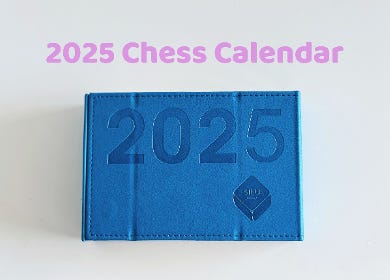




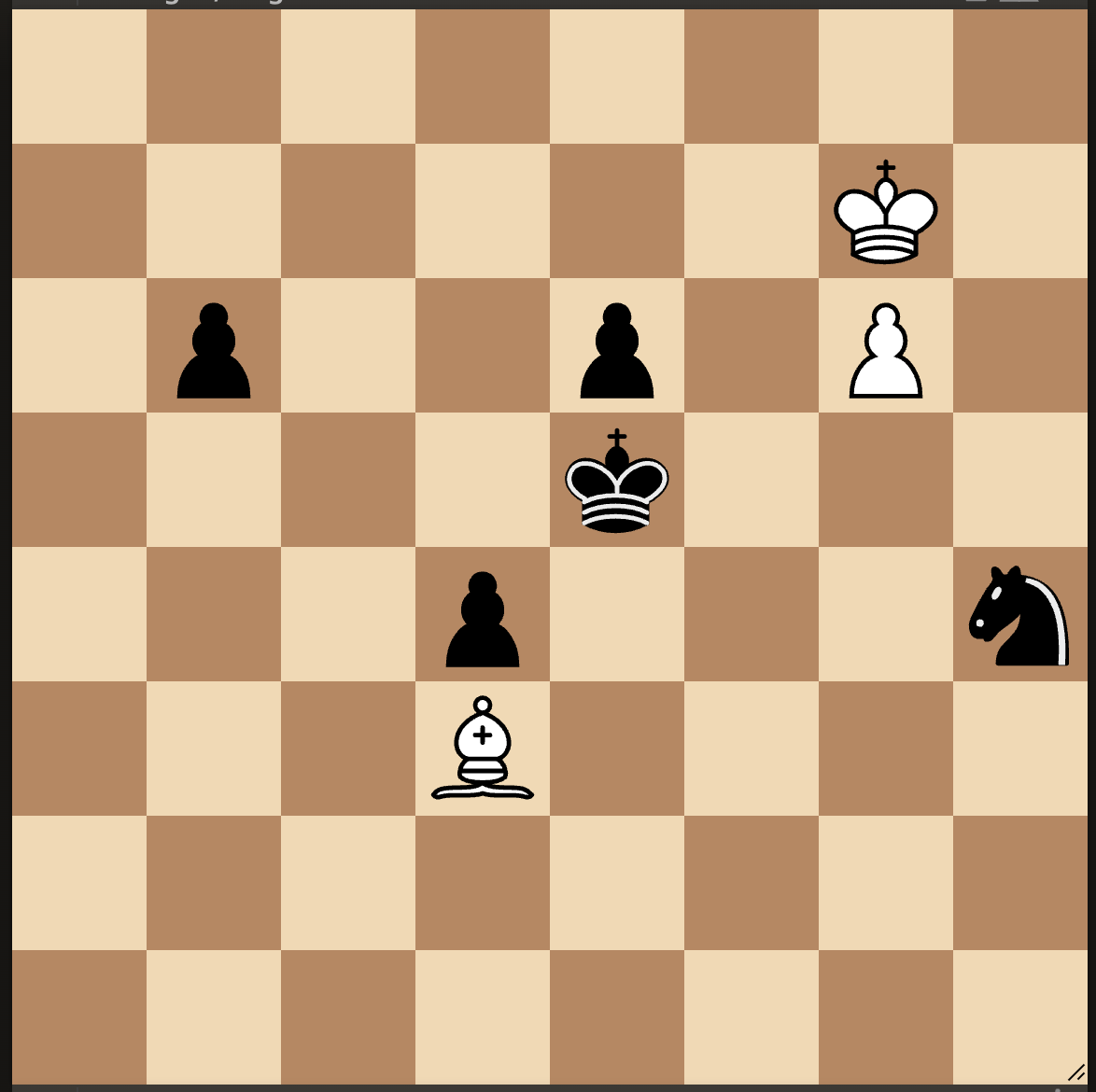




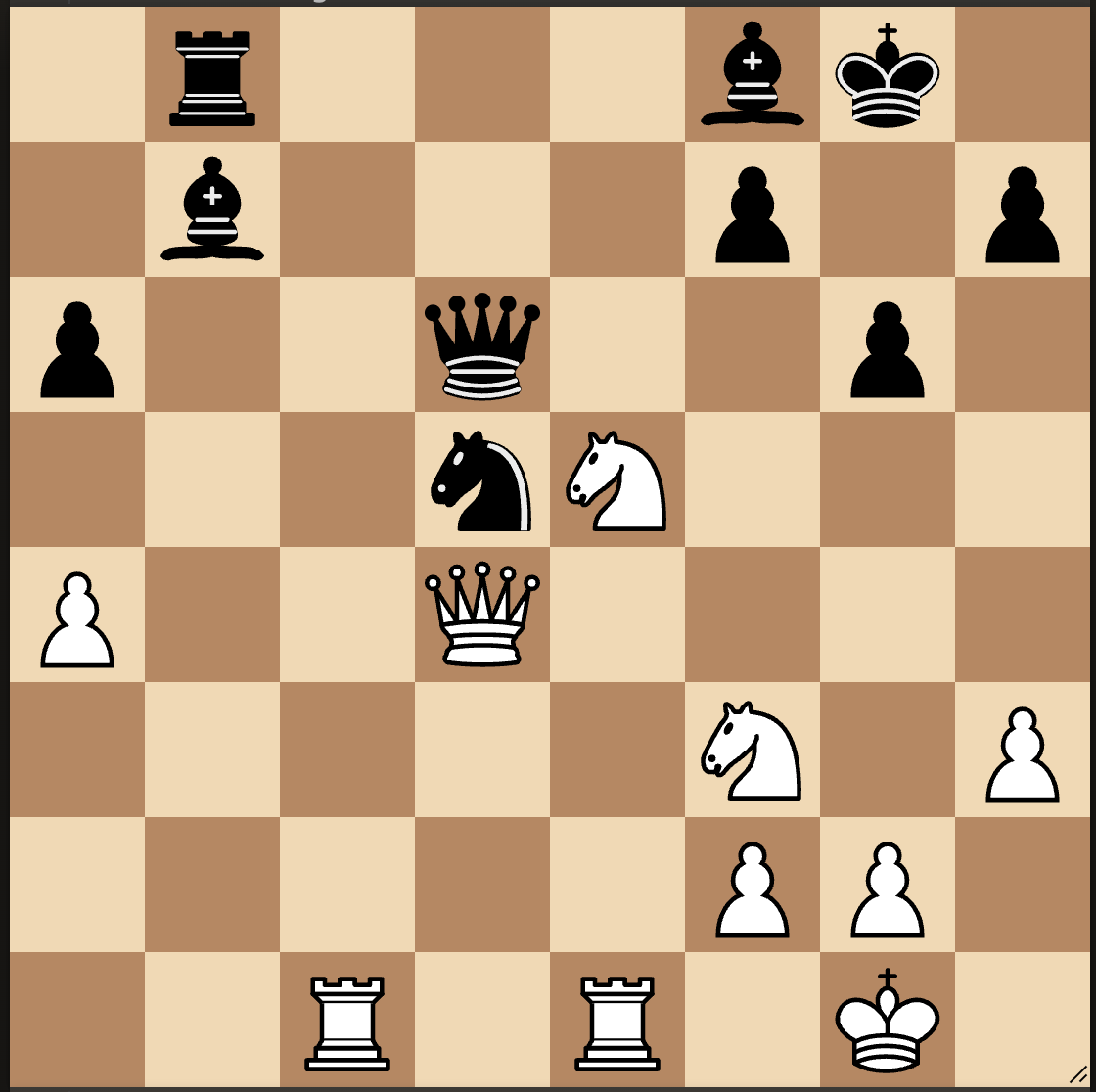


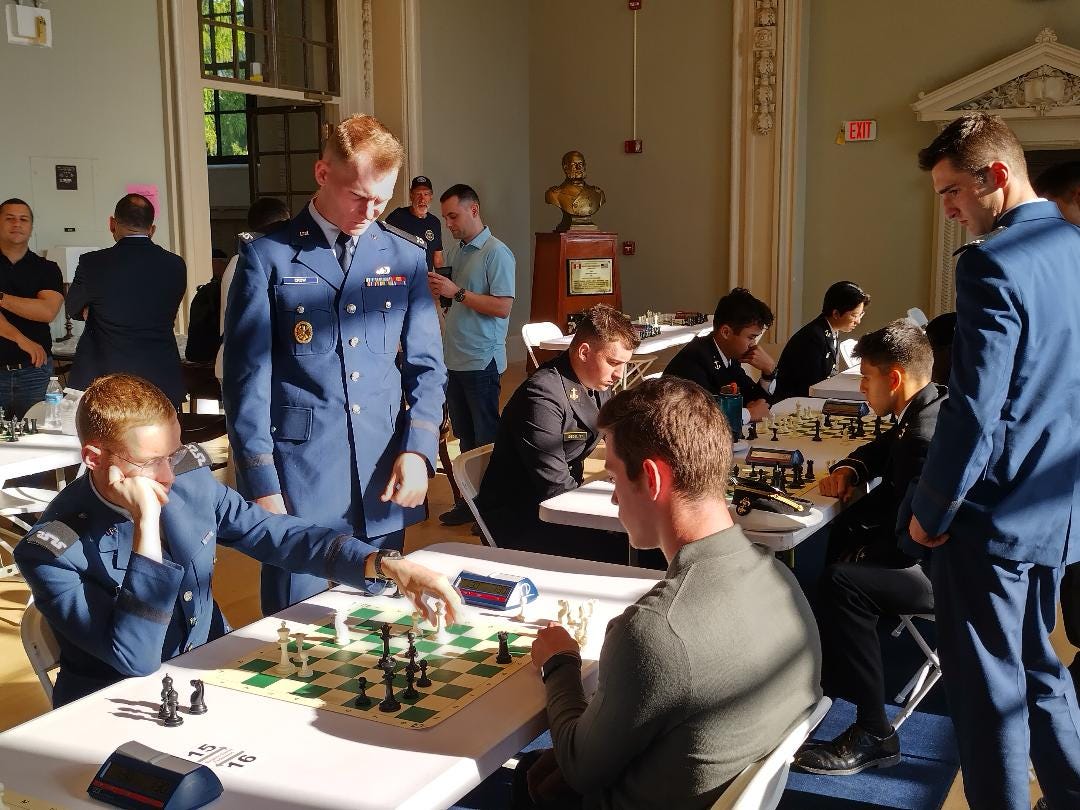

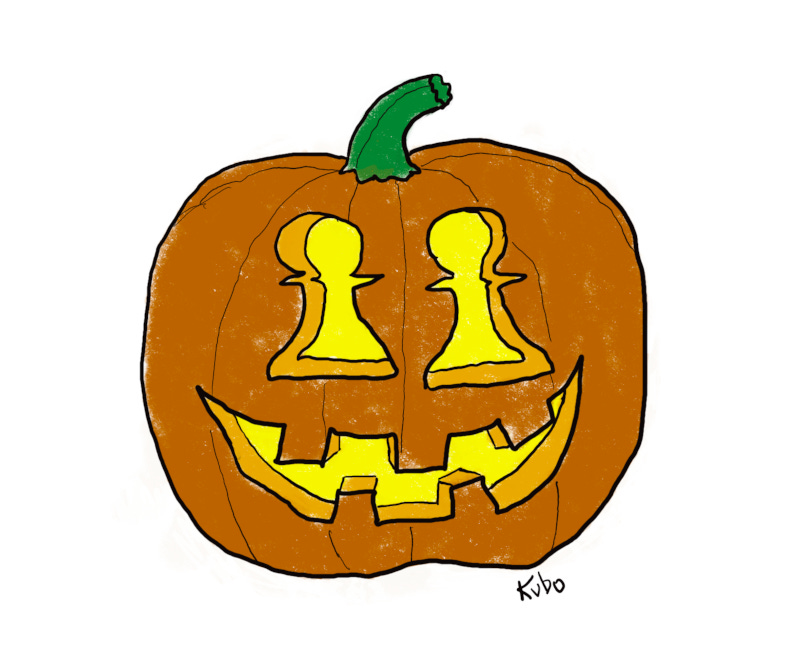

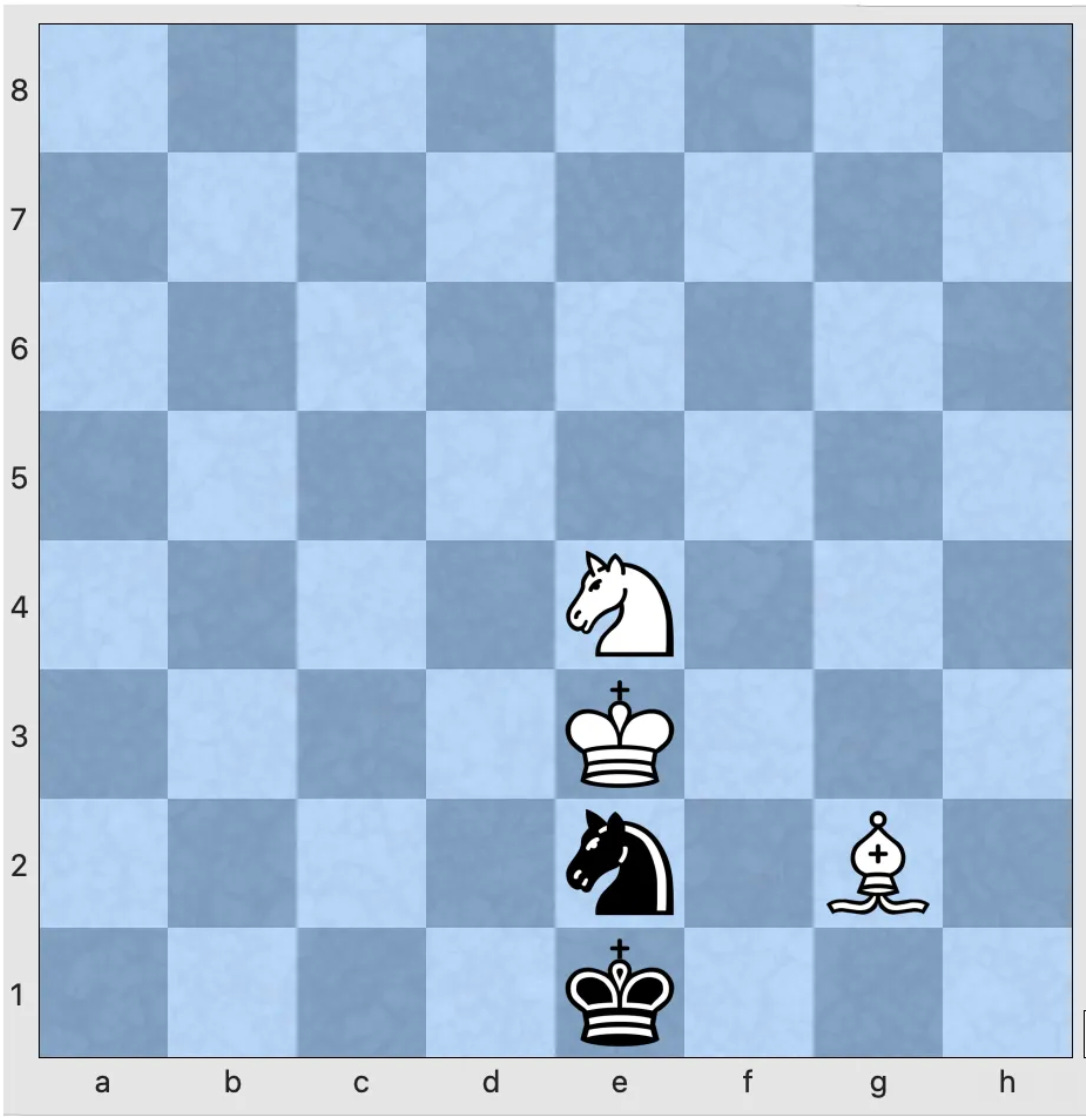

Thank you for your newsletter. Always enjoyable reading. Hope to visit you in the future.